When businesses fail to deliver a positive customer experience, it hurts their reputation.
Customer confidence is built on strong relationships and numerous customer engagements, or interactions. Companies must proactively and thoughtfully engage customers, putting their needs at the center of every decision.
There are several customer engagement and customer experience (CX) strategies that can help. In this article, we’ll explore the differences between them for brands.
Take the AI Maturity Assessment
In just 5 minutes, get your personalized score and recommendations to move forward with AI.
Comparing Customer Engagement vs. Customer Experience
Customer engagement and customer experience are not the same thing, but they are pieces of the same puzzle.
Customer engagement encompasses every interaction a customer has with a brand, reflecting the strength of their connection with that brand. These interactions include but are not limited to, comments, shares, and website visits.
Customer experience, on the other hand, is the experience a customer has with a brand across all touchpoints. It starts with the first interaction and continues as you build a long-term relationship. CX reflects a customer’s overall perspective of your brand.
Walt Disney once said, “Do it so well that when people see you do it, they will want to come back and see you do it again, and they will want to bring others and show them how well you do what you do.”
To achieve this, you need both engagement and CX best practices.
Here’s how customer engagement and CX differ at a basic level:
- Customer engagement: Focuses on short-term interactions like customer service calls and email communication. Engagement seeks to initiate interaction with a customer while capturing their attention.
- Customer experience: Aims to streamline a customer’s entire journey with a brand while focusing on long-term relationship building.
Effective customer engagement leads to exceptional customer experience (CX).
Customer engagement strategies encompass various aspects, including actively communicating with customers and seeking their feedback. Implementing their feedback lets you build a solid connection. However, customer engagement goes beyond communication. It also involves active listening, personalizing responses, and measuring customer behavior. Several customer engagement tools help you take care of these aspects.
Customer experience comes from satisfactory customer engagement. Of course, only the customer knows what’s satisfactory for them. To deliver an exceptional CX, it’s important to understand and meet your customers’ expectations.
According to a Forbes survey, 81% of customers value personalized experiences and prefer to do business with companies that offer them. Simply put, personalized CX means higher customer satisfaction. For some brands, it also means being genuine and truly understanding their customers.

Customer Engagement vs. Customer Experience: What It Means for Employees
Employees naturally participate in delivering engagement and CX. Some do this more actively than others as part of their day-to-day roles.
What does customer engagement mean for employees?
The responsibility of proactively engaging customers falls mainly on marketing, customer support, and customer service employees.
Marketing teams run email campaigns, answer customer queries on social media, and set important push notifications. Meanwhile, the customer service team answers customer queries or takes sync calls with larger accounts to proactively engage customers on various issues.
These teams are more involved than others in engaging customers. Often, accounting and finance teams also participate in customer engagement while sending automated payment reminders or new invoices.
Every interaction your company has with customers is part of customer engagement. Great companies make sure these interactions are always consistent and meaningful.
What does customer experience mean for employees?
Although some teams are more involved in running customer engagement initiatives, customer experience requires the participation of the whole company.
The best customer experience comes from a customer-centric approach. Sales, finance, marketing, product, and ops teams must all strive to keep activities customer-focused.
CX encompasses a customer’s entire experience with a brand. To deliver a positive CX, you need all teams to align their objectives toward a single goal. This keeps all your teams focused on the customer, creating an experience that encourages them to return.
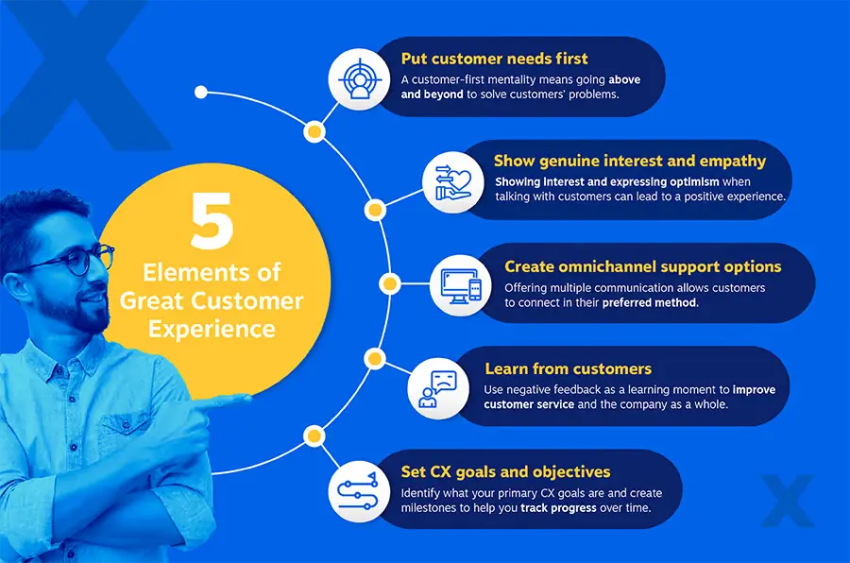
Customer Engagement vs. Customer Experience: What It Means for Brands
Customer experience and engagement are directly associated with a brand’s success. Let’s look at how brands see them differently.
What does customer engagement mean for brands?
Customer engagement shows how relevant a brand is to customers and how actively it connects with buyers. Brands measure engagement with the help of different metrics:
- Likes
- Shares
- Comments
- Interaction rate
- Clicks
- Email opens
- Form submissions
The metrics you adopt will depend on your business type and the channels you use. For example, a marketing agency might have WhatsApp interactions as a key customer engagement metric in an area where WhatsApp is a popular messaging application. Meanwhile, LinkedIn or mobile app interactions would be of greater value to businesses across various sectors.
What does customer experience mean for brands?
While customer engagement metrics might be channel-specific, based on your customers’ location or the type of business, CX reflects long-term satisfaction, customer loyalty, and brand perception. These long-term metrics allow brands to track how well they can retain customers and how likely their loyal customers are to advocate for them.
Many brands use metrics to measure CX:
- Net Promoter Score (NPS): Asks customers to rate a quality or aspect of a business on a scale of 0 to 10.
- Customer Satisfaction Score (CSAT): Analyzes how happy customers are with a service or interaction.
- Referrals: Reflect the number of potential buyers your satisfied customers are bringing in.
All of these are long-term measurements of a brand’s CX. For example, “Above 76” is a good example of an NPS benchmark for a B2B consulting firm.
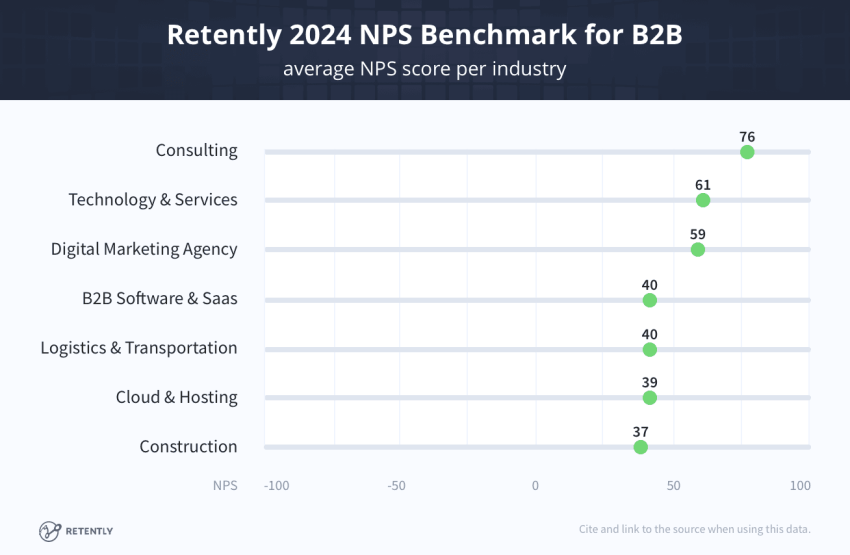
Source: Retently
If a business’s NPS is above the benchmark post-purchase and gets good referrals, the brand will likely have a positive CX.
CE vs. CX: Goals & Objectives
Despite sharing a common long-term goal of building lasting customer relationships, they both follow different paths to achieve these objectives.
Customer engagement is all about maximizing customers’ interest in your product by consistently developing interactions that improve product usage, inspire repeat business, and foster loyalty. Some initiatives that CX leaders use to keep customers invested include loyalty programs, exclusive offers, product recommendations, and proactive notifications.
Let’s look at a practical example of customer engagement at play:
Suppose a customer makes a purchase online. Instead of simply sending a confirmation email, go a step further to boost engagement post-purchase. Share additional helpful content, like a product tutorial, product usage best practices, exclusive offers, etc.
By creating such personalized interactions, you build a positive customer experience, which leads to satisfied customers who stick around for longer.
Customer experience, on the other hand, focuses on ensuring a customer has a delightly experience when interacting with your brand across various touchpoints and channels. Besides rolling away blockers that may frustrate users and cause churn, CX also aims to personalize the customer’s journey and maintain brand consistency. Good brand perception isn’t just about logos or ads; it’s about trust, consistency, and how customers feel when interacting with the brand.
Customer engagement drives interaction, and experience builds loyalty
A customer in isolation cannot experience a brand’s true potential. Customer engagement initiatives drive customers out of isolation, encouraging them to interact more actively. These initiatives capture customers’ initial attention while bringing them into the fold, setting the foundation for a relationship you and the customer will cherish for years to come.
When you pair engagement initiatives with customer experience strategies, the relationship flourishes, fostering brand loyalty. Given the right CX nurturing, customers first become promoters and later advocates, helping potential buyers see and hear their support for the brand. This creates social proof for your brand and positive word-of-mouth in the marketplace, making purchasing decisions much easier for potential buyers.
Improving both maximizes growth
CX and customer engagement work together to create synergy. Maintaining this synergy and scaling it further helps your business grow. Customer engagement enables you to understand what buyers interact with the most. You can optimize or scale that aspect of the engagement strategy to increase conversions.
As more buyers enter your customer base, an outstanding customer experience will initiate a long-term relationship with them. This is crucial for businesses, especially in a sector that depends on repeat purchases and subscriptions.
The result is higher customer retention, reduced churn, increased satisfaction, and, ultimately, a higher lifetime value.
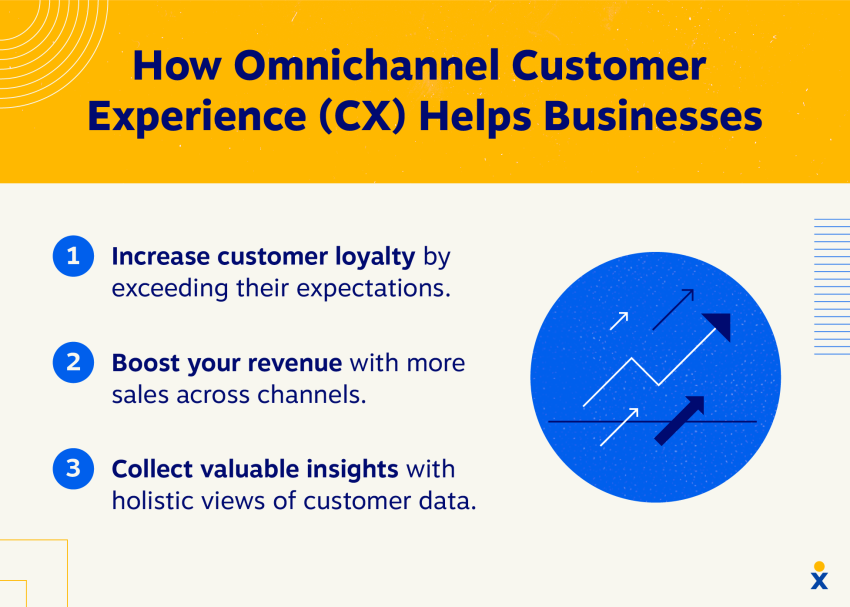
Pairing proactive and reactive strategies
Engagement is a proactive strategy that focuses on attracting customers and stimulating interaction. It uses personalized marketing campaigns and proactive customer outreach programs to build and retain customers.
CX is a reactive strategy that guarantees all interactions meet or exceed customer needs. It includes reactive strategies for dealing with customer concerns and providing exceptional service.
When you pair proactive and reactive strategies together (customer engagement vs. customer experience), you create a memorable customer life cycle in your business.
Top 6 Must-Have Tools for Managing Customer Engagement in 2025
Why you need customer engagement tools
95% of CX companies use multiple CX tools to optimize engagement strategies and build lasting relationships with customers. Engagement tools are a necessity for any business looking to deliver exceptional experiences to its customers from initial interaction to post-purchase support. Here’s why:
- They streamline customer engagement by providing a single platform for companies to manage all customer interactions across various touchpoints
- Continuously gather feedback through multiple survey channels to drive improvement
- Improve brand loyalty by harnessing customer data to segment users and create personalized experiences
- Allow businesses to take advantage of upselling, cross-selling, and remarketing opportunities to drive revenue
- AI-powered platforms offer automations for assisting teams with routine or administrative tasks
AI is revolutionizing the customer service space by providing automation tools that enable brands to accomplish more with smaller teams and reduce costs. Leading customer experience (CX) companies utilize smart technology to seamlessly scale engagement operations by introducing AI tools into the feedback loop, which helps identify patterns and initiate interactions.
How to choose the best customer engagement tool
Outside the obvious considerations like business size and budget, there are certain key features to look out for while choosing the right engagement tools:
Segmentation: Source for tools that can analyze user behavior based on app activity over time and divide them into segments, allowing you to refine messages to appeal to customer archetypes.
Scalability: Don’t just solve for today. Every business envisions future growth, and therefore, it’s important to look into tools that support the potential expansion of your customer base and engagement channels.
CRM Integrations: This engagement platform must enable seamless integration with other CRM software. Tracking customer data from a centralized dashboard provides a comprehensive view of performance metrics and deepens insight. In fact, 81% of companies agree that unified systems improve customer engagement. Choosing a platform that offers a holistic approach doesn’t just provide better data visibility; it also streamlines customer experience (CX) processes, boosting your operational efficiency.
Nextiva combines robust customer engagement and service features into a single application that supports third-party integrations with CRM tools, providing a unified platform to customer-facing teams to coordinate CX processes and gather rich insights to drive data-driven decisions.
Types of engagement tools
CRM systems
CRM tools are software applications designed to track, analyze, and manage customer interactions at multiple touchpoints. By providing an exhaustive overview of customer experience, they deliver insights that benefit customer service functions and other related activities such as marketing and sales. CRM systems, such as Salesforce, HubSpot, and Zoho, enable businesses to personalize customer engagements, increase productivity, and ultimately enhance the overall customer experience (CX).
Ticketing tools
These tools help teams organize and manage customer support requests from a single location. With ticketing tools, businesses can transform their support services through multi-channel support, smart ticket routing, and self-service portals.
Chatbot & AI-powered tools
Chatbots and AI-powered tools offer automation and conversational AI technology, enabling businesses to scale customer interactions. They offer powerful features like sentient chatbots, automated call routing, and omnichannel support. Leveraging AI for customer engagement not only improves operational efficiency but also enhances satisfaction by delivering quick and consistent support.
Recommended tools for managing customer engagement
Nextiva

Nextiva is a solid option for small to medium-sized businesses, as well as larger organizations, looking for a convenient solution to manage customer experience from a single platform. Its unified customer knowledge base helps users understand and design personalized engagements tailored to every customer’s unique journey.
Recognising the importance of meeting customers where they are, Nextiva supports omnichannel communication, allowing users to open conversations with customers on a wide range of mediums, including voice, video, chat, SMS, and email.
For fast-growing businesses, Nexitva also offers a sophisticated suite of AI and automation features to help shoulder the increasing workload as customer traffic surges. It’s AI-powered automations support customer engagement by intelligently routing calls, assigning tickets, sending follow-ups, and triggering workflows, to ensure that your customers feel seen and valued.
Pros:
- All-in-one customer experience solution
- Scalability and extensive third-party integration support
- Comprehensive analytics and reporting
- Enhanced customer relationships
- AI-powered features + automations
Cons:
- Complex setup processes: It’s not your typical plug-and-play system. However, the support team offers sufficient assistance to help new users get started.
- High cost
HubSpot
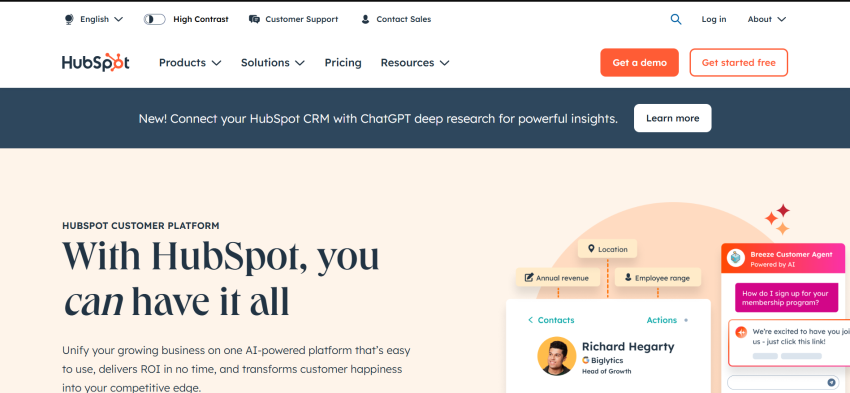
HubSpot is a robust customer engagement platform that provides a powerful suite of features for managing customer interactions and fostering meaningful connections. From CRM to live chat, email marketing, and feedback management, this platform enables users to create personalised experiences across multiple channels.
To help you understand what works, Hubspot also offers insights for measuring the impact of customer engagement initiatives based on customer feedback and interactions, all in one place.
Hubspot stands out in the market for its comprehensive approach to customer experience. It houses all customer data in one dashboard, giving you access to contact information, past communications, deal stages, and even notes. By combining this data-rich center with Hubspot’s extensive omnichannel support, this tool empowers you to craft highly personalized customer experiences across multiple touchpoints.
Pros:
- All-in-one platform solution:
- Scalability and extensive third-party integration support
- Comprehensive analytics and reporting
- Enhanced customer relationships
Cons:
- Limited contact management: multiple phone numbers cannot be attached to a single contact.
- Not cost-effective: prices aren’t friendly for small or startup businesses
Zendesk
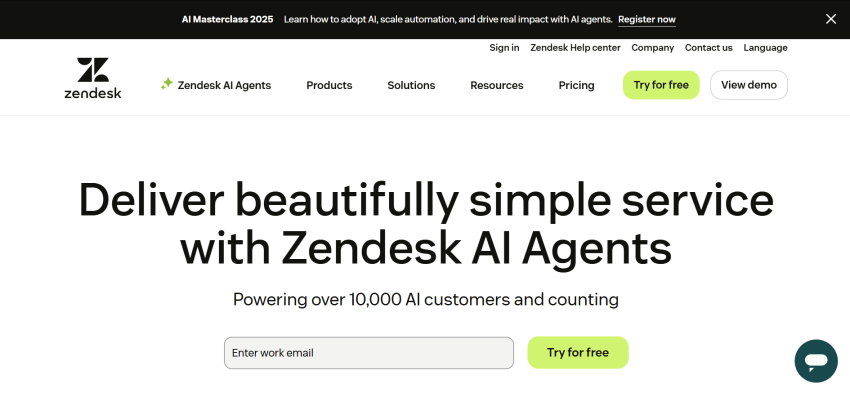
Zendesk is a powerful engagement tool designed to enable meaningful communication with customers across various mediums, including a ticketing system, live chat, and social app. It’s a good choice for businesses looking to quickly integrate a sophisticated engagement solution into their technology stack due to its ease of setup and configuration.
This platform enables users to manage various communication channels from a single dashboard, simplifying team management of customer interactions and enhancing operational efficiency.
Pros:
- Integrated knowledge base
- Flexible reporting features
- Comprehensive, easy-to-use suite of features
- Multichannel support
Cons:
- Reported bugs in the call feature
- Lack of customization options for specific features
CleverTap

CleverTap focuses on providing data and insights to help users deliver the most personalized in-app experience possible to each customer across every touchpoint. It keeps customer interactions relevant and engaging through personalized messages, recommendations, and offers based on unique behaviour and preferences.
Other tools, such as A/B testing, dynamic content, and feature flags, enable businesses to experiment with various strategies for optimizing customer engagement and conversions.
Pros:
- More affordable than most competing platforms
- Real-time analytics for tracking user behaviour and engagement
- Omnichannel support for reaching customers
Cons:
- Users have reported slow data segmentation with large databases
- Not available as a mobile app
OneSignal
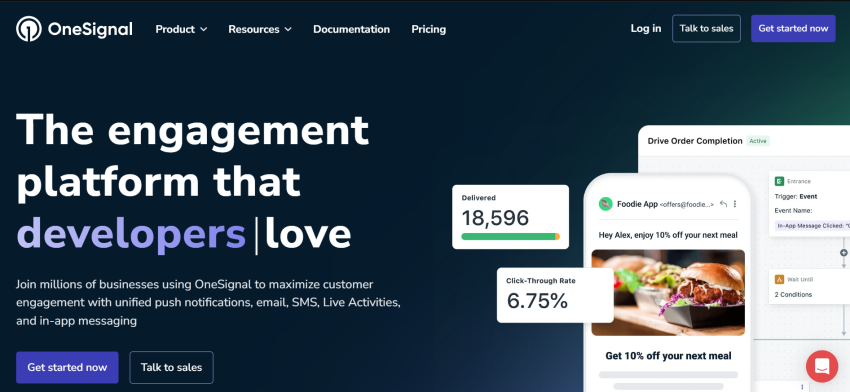
OneSignal specializes in providing comprehensive reporting and analytics tools that offer users actionable insights into customer engagement through key metrics, including open rates, click-through rates, delivery rates, and conversions.
With the metrics obtained from OneSignal’s reports, businesses can make data-driven decisions to enhance their engagement strategies and deliver more personalized interactions, thereby strengthening customer relationships.
Pros:
- Advanced customer segmentation capabilities
- Automated notification triggers
- Ease of use
Cons:
- Some users have experienced difficulty setting up
- Users have also reported issues with delayed notifications
Intercom
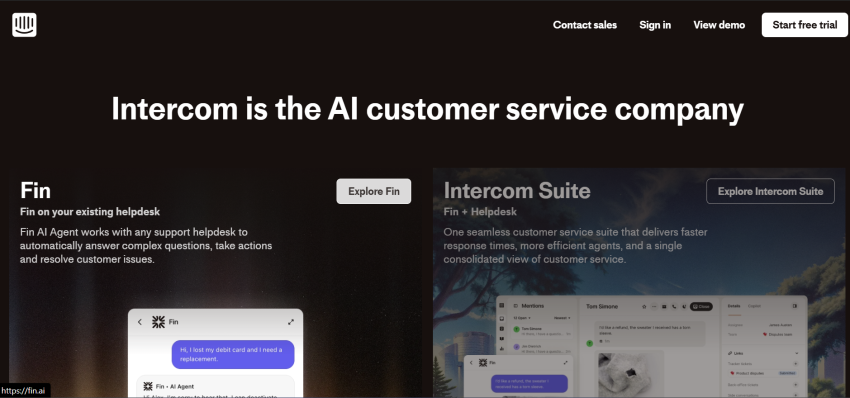
Intercom offers a modern management tool for addressing customer support and engagement challenges. With its AI-driven automations and powerful messaging features, businesses can connect with customers more efficiently and scale operations to meet growing demand.
Pros:
- User friendly
- Supports multiple third-party integrations
- Robust customer monitoring features
Cons:
- Inadequate analytics and reporting
- Automations may require professional assistance due to their complexity
Get the State of CX Report
All our customer experience insights and tips on developing your CX strategy — right in your inbox.
How Nextiva’s Unified CXM Software Helps Achieve Both
Nextiva’s unified customer experience management software helps brands automate strategic customer engagement, setting the stage for an exceptional customer experience. It centralizes all interactions, providing a single platform for tracking and managing customer communications.
This centralized approach keeps you aware of the context regardless of the channel you use to interact with customers. It ensures consistency in communication and allows all teams to deliver CX according to the required standard. The platform also features omnichannel capabilities that facilitate easier customer engagement while respecting their individual preferences.
With Nextiva, you can visualize the customer journey by integrating with customer data and analytics platforms. Seeing the various stages of the journey allows you to identify areas where your customer experience (CX) needs improvement and helps you make strategic changes to increase satisfaction. The software also delivers real-time analytics, providing you with insights into engagement that you can use in your interactions, helping to drive improvement.
Nextiva’s platform measures customer satisfaction and interaction quality based on feedback, delivering valuable insights to optimize strategies that take the overall customer experience to the next level.
Learn more about the Unified CXM platform from Nextiva to give your customers the best engagement and experience. 👇
Build Amazing Customer Experiences
Transform customer experience on a Unified Customer Experience Management platform designed to help you acquire, retain, and grow your customers.

















 Customer Experience
Customer Experience 










